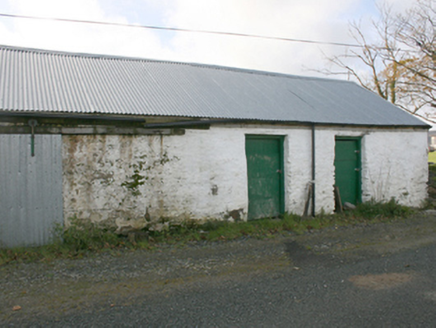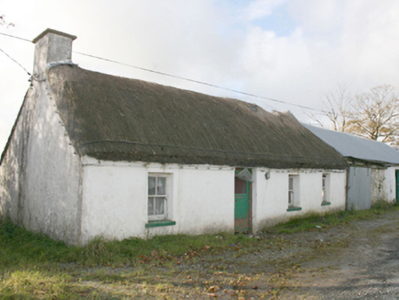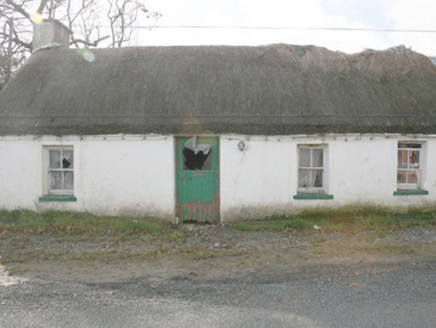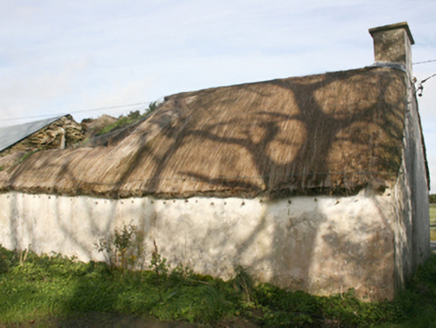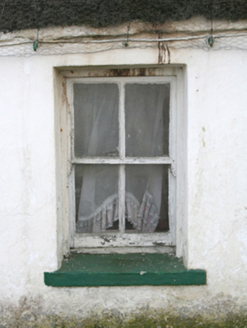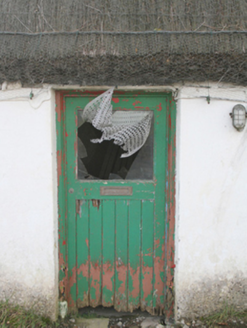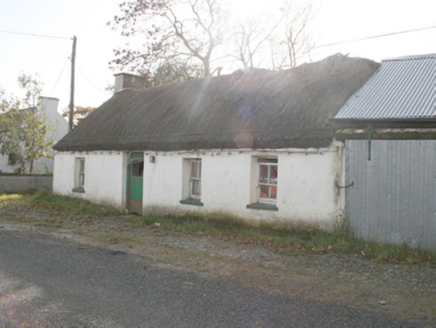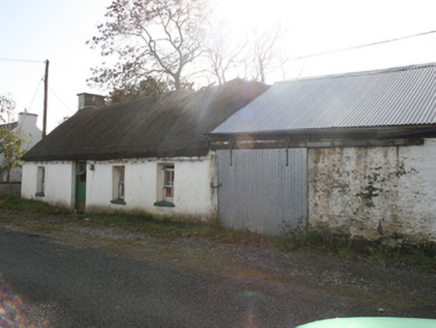Survey Data
Reg No
40903109
Rating
Regional
Categories of Special Interest
Architectural, Technical
Original Use
House
Date
1770 - 1830
Coordinates
254009, 434899
Date Recorded
18/10/2008
Date Updated
--/--/--
Description
Detached four-bay single-storey thatched house, built c. 1800, with attached outbuildings to north. Pitched straw thatched roof with cast-iron ties in wall to secure wire netting constraint, smooth render chimneystack with terracotta pots. Smooth rendered walls. Square-headed window openings with smooth rendered reveals, two-over-two pane horned timber sliding sash windows, painted stone sills. Square-headed door opening with timber battened door with glazing. Fronts directly onto the road; attached single-storey outbuilding to north comprising of pitched corrugated-metal roof, with whitewashed random rubble stone walls, large square-headed door opening to south with corrugated-metal door, two square-headed door openings to north with painted timber doors.
Appraisal
Although now disused, this relatively intact example of a vernacular house retains its early form and character, and is an appealing feature in the scenic rural landscape to the south-west of Moville. Modest in architectural ambition it exhibits the simple and functional form of vernacular building in Ireland. Of particular interest in the survival of the thatch roof, albeit now collapsing, which is now sadly becoming increasingly rare in Donegal. The rounded roof is a typical feature of thatched houses located close to the sea in exposed areas in the north-west of Ireland, while the pegs to the eaves were used to tie ropes (and sometimes nets) over the roof to secure it against the prevailing winds, as is the case here at Ballyargus. Its visual appeal and integrity is enhanced by the retention of the timber sliding sash windows. The form of this building and location of the chimneystacks suggests the main dwelling is of the ‘direct entry’ type that is characteristic of the vernacular tradition in north-west Ireland. Sensitively restored, this building would make a strongly positive contribution to its pleasant rural location, and would be an integral element of the built heritage of the local area. The simple rubble stone outbuilding to site adds significantly to the context and setting.
